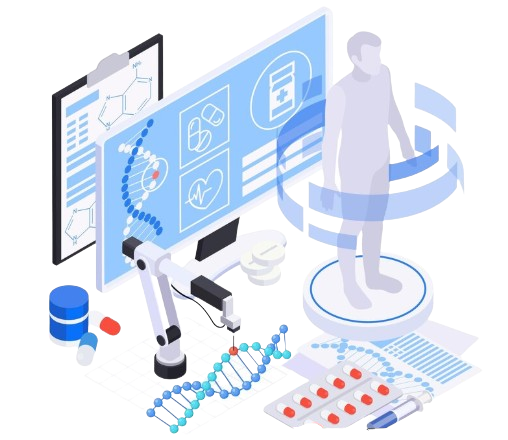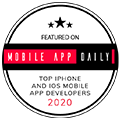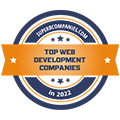Nano IoT Devices are a game-changer in the healthcare industry. They provide real-time, accurate data that enhances patient care, enables early diagnosis, and improves overall healthcare efficiency. From remote monitoring to personalized healthcare, these devices are transforming how healthcare providers interact with their patients.
In the world of healthcare, innovation is the key to improving patient care and outcomes. Nano IoT Devices are revolutionizing medical technologies by making them smaller, smarter, and more effective. These tiny devices are opening up new possibilities, from remote patient monitoring to advanced diagnostics. Nano IoT Devices are making healthcare more accessible, personalized, and efficient. Let’s dive deeper into how these innovations are transforming the medical industry.
What are Nano IoT Devices?
These devices are miniature sensors and devices that use the Internet of Things (IoT) to communicate and collect data. Unlike traditional medical devices, Nano IoT Devices are compact, lightweight, and capable of operating in real-time. These devices are small enough to be implanted inside the human body, wearables, or even embedded in medical instruments. By connecting these devices to the internet, doctors and healthcare professionals can monitor a patient’s health in real-time and make data-driven decisions.
The most significant feature of these devices is their ability to deliver precise, immediate data that can enhance treatment outcomes. These devices allow healthcare providers to track everything from blood pressure and glucose levels to oxygen saturation and heart rhythms. With the ability to monitor these metrics continuously, healthcare professionals can intervene quickly if there are any changes in a patient’s condition.
Nano IoT Devices in Remote Monitoring
Remote patient monitoring (RPM) is one of the most powerful applications of these devices. With the rise of chronic diseases and the aging population, remote monitoring has become an essential tool in managing long-term care. These devices allow healthcare providers to keep track of a patient’s vital signs without requiring them to visit the hospital regularly. This technology is particularly beneficial for patients with chronic conditions like diabetes, heart disease, and hypertension.

By using these devices, healthcare professionals can receive real-time updates on their patients’ health status. This allows doctors to adjust treatments and medications as needed, ensuring that the patient is always receiving the best possible care. These devices also help reduce unnecessary hospital visits, saving both time and money for patients and healthcare systems.
Moreover, remote monitoring allows patients to have a more comfortable experience with continuous oversight from their healthcare providers. With the assistance of Nano IoT Devices, healthcare systems can provide personalized care and attention without the need for in-person appointments. This is a win-win for both patients and healthcare professionals.
Advanced Diagnostics with Nano IoT Devices
Another important application of these devices in healthcare is their role in diagnostics. Traditional diagnostic methods often require patients to visit medical facilities for tests and scans. However, these devices allow for non-invasive, continuous monitoring that helps in early diagnosis. These devices can monitor subtle changes in a patient’s health, enabling the detection of conditions before they become critical.
For example, These devices can monitor a patient’s glucose levels in real-time, allowing doctors to detect early signs of diabetes or complications related to the disease. Similarly, these devices can continuously monitor heart rhythms to detect irregularities, such as arrhythmias, which might go unnoticed using conventional methods.
In the field of oncology, These devices can be used for monitoring tumor growth or the effectiveness of cancer treatments. By tracking biomarkers, these devices can provide real-time insights into the patient’s condition, leading to more accurate treatment decisions.
Nano IoT Devices for Personalized Healthcare
Personalized healthcare is all about tailoring treatment to individual patients based on their unique health needs. These devices play a significant role in this aspect by providing real-time, patient-specific data. This data helps doctors understand how each patient is responding to treatment and allows for adjustments to be made on the fly.
For example, in the field of pain management, these devices can provide insights into how a patient is reacting to certain medications. These devices can continuously monitor the patient’s responses and share data with healthcare providers, allowing them to make better-informed decisions about how to proceed with treatment.
The continuous flow of data from Nano IoT Devices enables healthcare providers to stay ahead of potential issues and adapt the treatment plan in real-time. This leads to improved patient outcomes and a more proactive approach to healthcare.
Nano IoT Devices in Surgical Procedures
Nano IoT Devices are also expanding the capabilities of surgery. Surgeons can use these devices to monitor the patient’s vitals and other important parameters during complex procedures. These devices help surgeons perform more precise operations by providing continuous data on critical conditions such as blood pressure, oxygen levels, and heart rate.
Moreover, some Nano IoT Devices can be implanted into patients during surgery to monitor their recovery process. These devices can alert doctors about any irregularities or complications during the healing process, such as infections or blood clots. By providing real-time information, these devices allow doctors to address potential problems before they become serious.
Nano IoT Devices and Healthcare Efficiency
These devices are not just improving patient care—they’re also making healthcare systems more efficient. With continuous real-time data from patients, healthcare providers can optimize their workflows and resource allocation. Hospitals can make better decisions about which patients need immediate attention based on their data and condition.
These devices also help reduce human errors by providing accurate, real-time measurements of patients’ vital signs. This leads to quicker interventions and fewer complications. Moreover, because Nano IoT Devices automate the data collection process, healthcare providers can focus more on patient care rather than manual data entry.
At Tanbits, we offer IoT services that integrate these advanced devices into the healthcare sector, enabling real-time monitoring, diagnostics, and enhanced patient care.
Conclusion
Nano IoT Devices are a game-changer in the healthcare industry. They provide real-time, accurate data that enhances patient care, enables early diagnosis, and improves overall healthcare efficiency. From remote monitoring to personalized healthcare, these devices are transforming how healthcare providers interact with their patients.
As the demand for smarter, more efficient healthcare grows, the role of Nano IoT Devices will only expand. With the ability to continuously collect and analyze data, these devices are ushering in a new era of healthcare where personalized, data-driven decisions lead to better patient outcomes. With innovations like Nano IoT Devices, the future of healthcare is not just promising—it’s already here.
BACK










